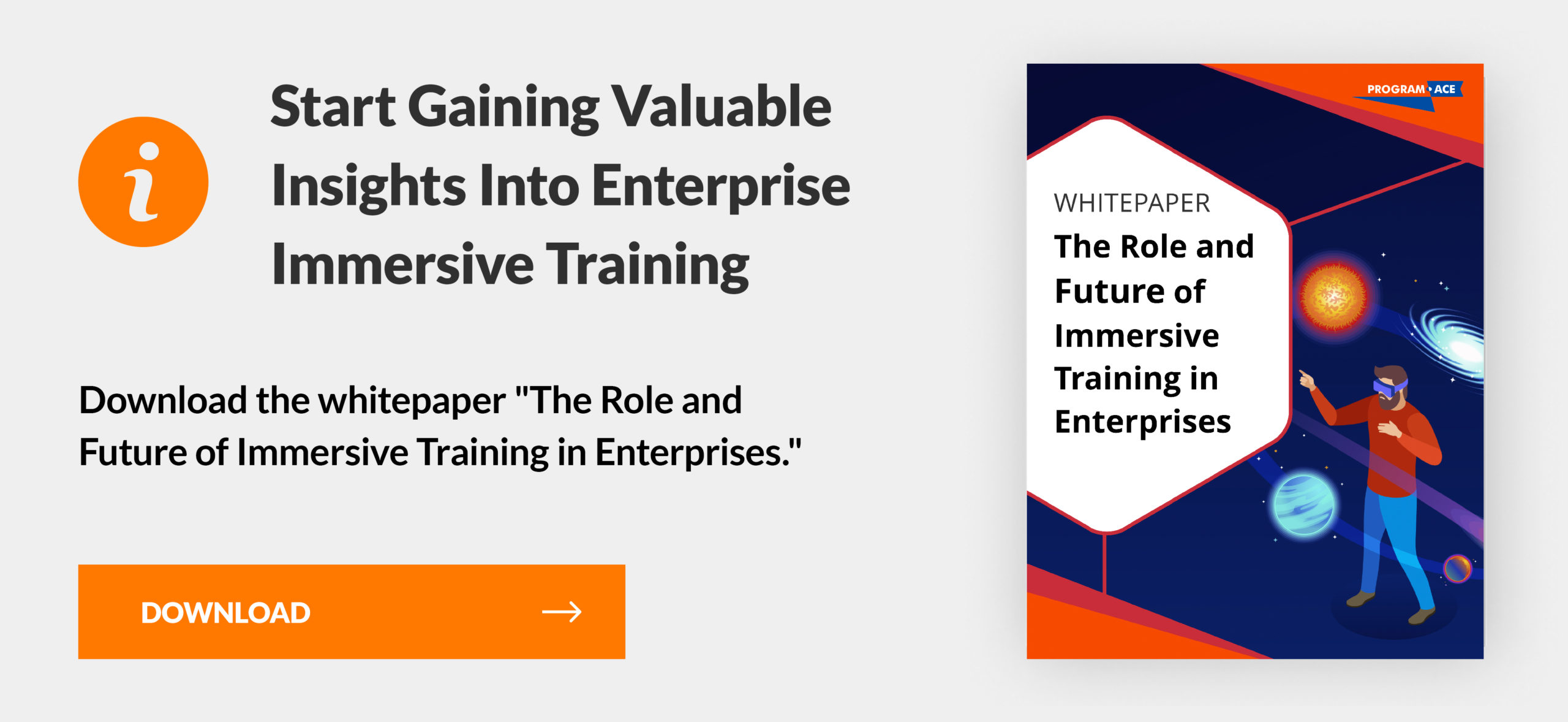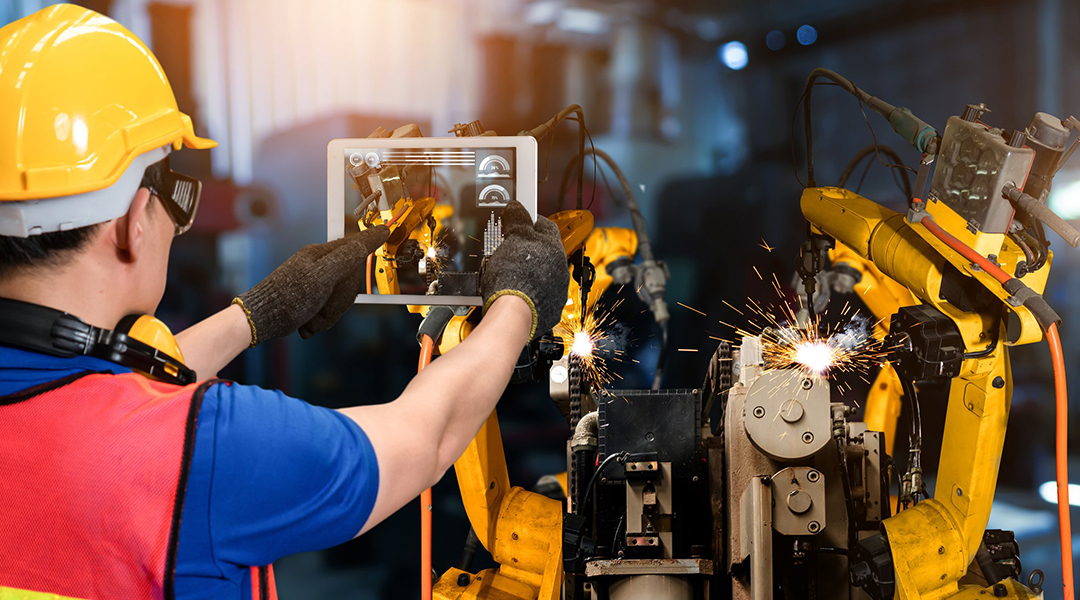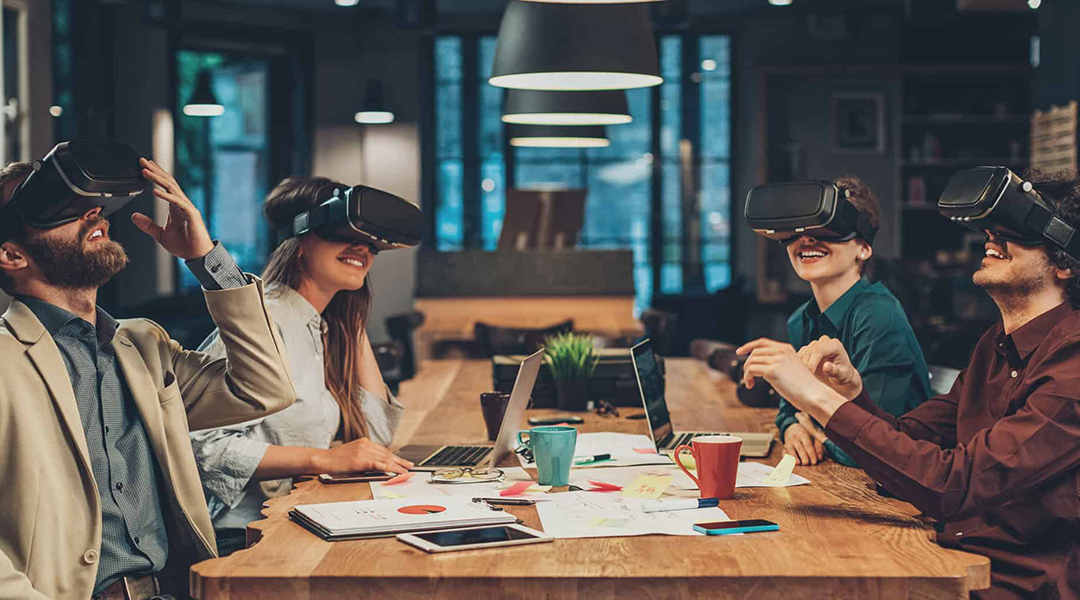Virtual reality has become a common thing in many industries and our lives in general. In 2021, 58.9 million people used VR headsets for various purposes in the US alone. Interestingly, construction has become one of the most prominent industries to understand and embrace VR’s effectiveness for staff training. This makes sense, as working in such an industry can be a pretty dangerous job.
But what are the exact uses of virtual reality training in construction? In this article, we’ll walk you through the main types and methods of construction VR training and ways of its implementation. Also, we’ll talk about how VR development services can help in building construction training software for your company.
Benefits of Using VR in Construction Ttraining
Research has shown that VR in construction training is significantly more effective than traditional training, especially in the context of cast-in-situ concrete works.
So if you are thinking about adopting virtual reality training in construction, it’s better to know the different benefits it can bring. We’ve highlighted the most practical ones that can positively affect your business.
Increasing staff safety
The construction work environment can be quite dangerous, as many employees have to deal with heights and complex hardware hazards. Thus, the cost of even minor mistakes can be drastic. Luckily, safety training in the construction industry eliminates the risk of injury, since errors made in a VR application will not lead to severe consequences. In addition, learning in a calm and safe environment helps assimilate the material better and increases the concentration of employees.
Boosting professional skills
Training programs in virtual reality can include as many scripts as your staff needs to raise their qualification. Usually, there is no extra time for conducting in-person training and distracting employees from their work. Luckily, with VR headsets, each specialist can train separately at an appropriate time, mastering soft or hard skills they need to improve. Thus, your team will be on a path of continuous improvement.
Reducing human error
Carelessness, distraction, lack of knowledge and skills — all of these can become the cause of simple mistakes that would never be done by a machine. That’s why collecting knowledge and regular practice are key strategies that help reduce human error.
Thus, VR training can provide employees with specific learning materials and various script cases to overcome and train. As a result, each specialist can react faster and do precisely what they need to prevent disaster.
Improving work performance
Training in a safe and interactive environment prepares for actual work in specific conditions. As long as VR training can provide employees with a clear understanding of what to do in real and sometimes dangerous surroundings by learning it in a safe space, specialists will perform better in the real world. It’s because they will be qualified enough not to spend time on questions, mistakes, and misunderstanding their duties.
Cutting extra costs
In-person training takes not only much time to organize and conduct but also lots of money. Hiring a trainer and simultaneously distracting too many workers leads to extra costs.
In addition, if we look at this issue from another perspective, it’s clear that work injuries caused by unsafe job training can cost a lot of money in compensation for the hurt employees. Consequently, training in virtual reality can help cut an outstanding share of the budget as it doesn’t require training collectively and learning from a real instructor.
You can learn even more ways to benefit from VR in construction that can help in boosting your business.
Types of Construction VR Training
Construction training in virtual reality is not the same as finishing a video course; it’s usually used for many training types. Therefore, a single VR solution can cover several operations and activities.
Training employees in construction
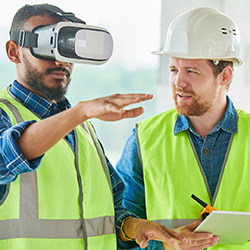
Construction work training implies working on different employees’ skills. For example, employees can learn to cooperate with other staff members by training with virtual characters. Thus, participants of VR training can complete tasks that involve collaboration with other people like watching out for colleagues, transportation of heavy loads, or crane supervision.
This helps reduce misunderstandings and increase overall collective performance. In addition, employees can put theoretical knowledge to use and explore the consequences of certain decisions on the job.
Construction safety training
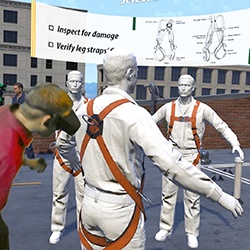
Work in the construction industry is full of hazards like handling heavy objects at heights and working with heavy equipment, putting employees at a high risk of injury. Also, learning new things and practicing in a dangerous environment negatively affect the retention of the learning materials.
Luckily, construction industry safety training in virtual reality allows getting a positive working experience without risk. Employees train in interactive surroundings with specific scripts that mimic real working cases. Workers can train as many times as they need until they reach the final goal — a high level of solving any problem and dealing with their duties accurately.
Emergency training
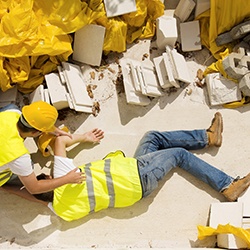
Sometimes, emergencies occur in construction due to human error or equipment malfunction. Stress can lead to poor decisions and dire consequences for both employees and the business in these situations. Therefore, it is best if employees are trained to cope with common emergencies in an interactive virtual environment. In this way, the staff accurately exercises the required behavior and also trains to act in a tense situation.
Onboarding training
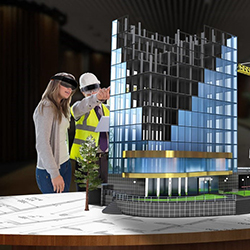
New employees have the most challenging time because they find themselves in a new work environment and are forced to learn how to interact with the environment, sometimes in extreme conditions. Companies that care about their employees often offer onboarding programs with custom VR apps. For example, you can take a virtual tour of a firm and construction area and practice interacting with tools, equipment, and other employees.
Hardware training
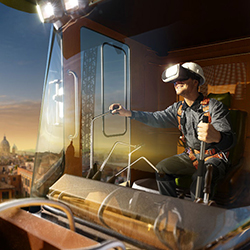
The construction industry requires impeccable knowledge of and experience with specific equipment. Thankfully, the interactive VR training environment allows you to learn how to work with heavy equipment like cranes and excavators. It can also train professionals to distinguish and correctly apply building parts such as hangers, angles and straps, base and cap hardware.
VR Training Approaches in the Construction Industry
Different software is used for the construction of VR workouts. Basically, such applications are created for the individual needs of each company in order to cover a range of tasks. Despite this, most training software uses key methods appropriate for the construction industry. So let’s look at four VR training approaches in the construction industry.
-
Immersive working environment. Construction training VR app developers create an immersive environment that simulates an actual construction area. Employees can interact with objects and the environment at the training site using hand controllers that mimic the user's movements. Also, sound effects create an additional immersive effect.
-
Interactive training scripts. Together with construction experts, scriptwriters create variable scenarios — situations that workers often encounter in real life. During training, employees learn to properly respond in different circumstances. Moreover, in the case of illegal actions and decisions, the user sees what the consequences of each error may be, but at the same time, they do not harm their health.
-
Virtual instructor support. Employees are not entirely alone during training - a virtual instructor assists them. Such a feature can be in the form of a 3D character or visual, text, and audio instructions. Thus, the employee receives all the necessary information without the participation of a living person, and can also work on mistakes and repeat the training course as many times as required.
-
Competence test/assessment. VR training is needed not only to train new employees but also to improve/evaluate the qualifications of experienced personnel. A training program developed on special algorithms can objectively assess competence and highlight weaknesses that are worth working on. Thus, the quality of the work of the staff will constantly increase.
Inspiring Examples of VR in Construction Training
A floor plan for a future hotel
VR Hotel - VR App from Program-Ace
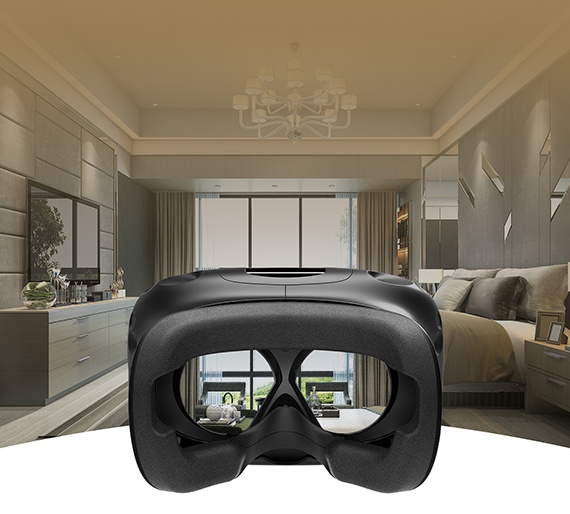
Program-Ace has created a practical solution for the construction industry — a VR hotel that helps construction workers and engineers visualize a building that is yet to be erected. This is an immersive application that simulates the structure, exterior, and interior of a hotel, and allows you to get acquainted with the future work areas. Also, one of the key purposes of the application is to reduce the time for creating a design plan, as well as operating costs.
Construction safety VR training from NSC
The National Safety Council initiated the development of a virtual reality training program for the construction industry. The program trains employees on uniform safety standards at the construction site, as well as training in hazard recognition skills.
The program includes passing an exam; as a result, employees who pass the test receive a certificate of successful undergoing safety training. Such a certificate is valid for five years, after which the employee must refresh his knowledge and pass the exam again.
Construction safety training by the Hong Kong government
The Hong Kong Smart Government Innovation Lab has sponsored the development of a virtual reality application for construction safety training. The solution includes construction site safety basics training, hazard recognition in a construction area, and an accident simulation mode as emergency training. In addition, the program provides a multi-user mode for training interactions between specialists.
Get Started with virtual training solutions!
Get the Most from Professional VR Development Services
As more and more companies adopt modern VR safety training programs, they will inevitably set a new bar for overall workplace safety standards. Even though it takes a lot of time and effort to develop a custom VR app, you can always rely on virtual reality safety training companies to cover the coding and other aspects of development.
Program-Ace is one such company that has been creating business solutions for almost thirty years. In 2021, we were named one of the top VR/AR developers by Clutch. This is because our team of specialists has all the necessary resources to carry out your project: special software, deep knowledge, and high-level skills.
Contact us in case you need professional app development for VR training in your industry; we will be glad to consult you and get your pave the way to your business success!
